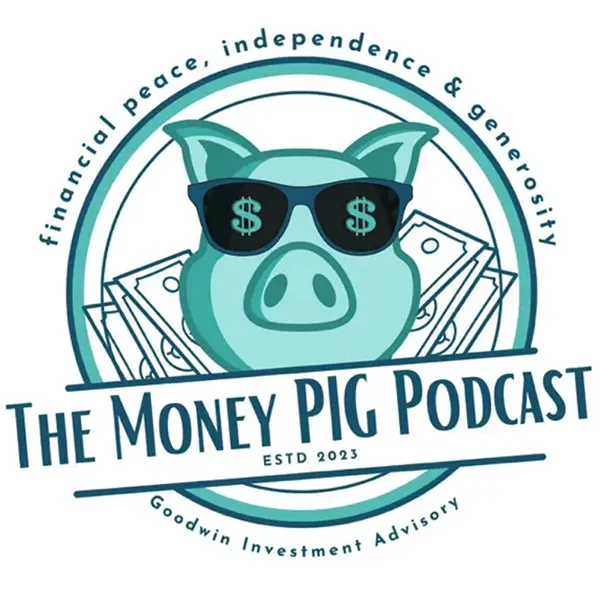February 6, 2023
The Markets
What do Samuel Clemens (a.k.a. Mark Twain) and the current economic expansion have in common?
Author and humorist Twain was prematurely reported to be dead. It first happened in 1897. Twain was on a speaking tour in London when rumors that he had fallen ill and died began to circulate. Then, about a decade later, The New York Times reported that a yacht Twain was on had sunk.
Ben Welter of the StarTribune wrote that Twain responded to the latter story by saying, “I sincerely hope that the report is not true and I suggest that all my friends suspend judgment until such time as I can ascertain the true state of affairs.”
There has been a lot of speculation about the death of the current economic expansion in the United States, too. The Federal Reserve has increased the federal funds rate at an unprecedented pace in 2022 to slow economic growth and price increases. Economists, business leaders, and even Fed officials have indicated that a recession – a period of economic contraction – may be ahead.
Last week’s economic data suggests that reports about the death of economic growth may have been exaggerated. The Bureau of Labor Statistics reported that more than 500,000 jobs were created in January – about twice as many as economists expected.
“Hiring topped all economist estimates, putting to rest any concerns that a manufacturing downturn and layoffs in the technology sector translate into weaker hiring across the country — at least for now. Payroll gains were broad-based, as factories, retailers and restaurants added jobs. Even construction increased employment amid a slump in housing. The robust demand for labor also pulled in traditionally sidelined workers, including Black Americans, whose jobless rate matched a historic low of 5.4% last month,” reported Augusta Saraiva and Katia Dmitrieva of Bloomberg.”
In addition, last week the International Monetary Fund raised its growth forecast for 2023. The global economy is expected to expand by 2.9 percent this year, largely due to resilient demand in the United States, falling energy costs in Europe, and the reopening of China’s economy.
While the outlook for the economy appears to have improved, the outlook for company earnings remains mixed. About half of the companies in the Standard & Poor’s 500 Index have reported fourth quarter results so far and earnings are down 5.3 percent, year-over-year. “Looking ahead, analysts expect earnings declines for the first half of 2023, but earnings growth for the second half of 2023,” reported John Butters of FactSet.
Major U.S. stock indices finished the week mixed. The S&P 500 and Nasdaq Composite Indexes moved higher, while the Dow Jones Industrial Average finished slightly lower, reported Nicholas Jasinski of Barron’s. Treasury yields moved lower for much of last week before bouncing higher after the strong jobs report.

A NEW LAW MAY AFFECT YOUR RETIREMENT PLANS. Late last year, Congress passed the SECURE 2.0 Act into law. Many provisions of the new law are expected to help improve retirement readiness in the United States. For example, the law changes the rules that apply to required minimum distributions. Here are a few of the highlights:
- Retirement savers can keep their savings invested longer. Many Americans save for retirement in employer-sponsored retirement plans, Roth and Traditional IRAs, and other tax-advantaged investment vehicles. The government requires participants to begin withdrawing money from these plans at a certain age. The new law raises the age for required minimum distributions (RMDs) from 72 to 73 in 2023 and to age 75 in 2033.
That may not seem like a big deal, but it could be. Hypothetically, a person with a million dollars saved for retirement could be required to withdraw about $36,500 in RMDs at age 72. In contrast, a person with a million dollars for retirement who didn’t have to take RMDs until age 75, could see the value of their savings increase by about $191,000 over three years, if they earned 6 percent a year, on average, and the interest compounded annually.
- Roth accounts are exempt from RMDs. Many people choose to contribute to Roth accounts in their employer-sponsored retirement plans even though the contributions are taxable. They prefer Roth accounts because any distributions are tax-free. The new law says that, starting in 2024, Roth account owners will not have to take RMDs.
- RMD penalty taxes have been reduced. When retirement plan accountholders fail to take full RMDs, they owe a tax penalty. In the past, the penalty was 50 percent on insufficient or late withdrawals. Now, the penalty will be 25 percent if the issue is not corrected quickly, and 10 percent if it is.
The new law includes dozens of provisions. If you would like to talk about how the changes may affect your retirement or estate plans, give us a call.
Weekly Focus – Think About It
“Live as if you were to die tomorrow. Learn as if you were to live forever.”
—Mahatma Gandhi, political and spiritual leader
Required Disclosures:
* These views are those of Carson Coaching, not the presenting Representative, the Representative’s Broker/Dealer, or Registered Investment Advisor, and should not be construed as investment advice.
* This newsletter was prepared by Carson Coaching. Carson Coaching is not affiliated with the named firm or broker/dealer.
* Government bonds and Treasury Bills are guaranteed by the U.S. government as to the timely payment of principal and interest and, if held to maturity, offer a fixed rate of return and fixed principal value. However, the value of fund shares is not guaranteed and will fluctuate.
* Corporate bonds are considered higher risk than government bonds but normally offer a higher yield and are subject to market, interest rate and credit risk as well as additional risks based on the quality of issuer coupon rate, price, yield, maturity, and redemption features.
* The Standard & Poor’s 500 (S&P 500) is an unmanaged group of securities considered to be representative of the stock market in general. You cannot invest directly in this index.
* All indexes referenced are unmanaged. The volatility of indexes could be materially different from that of a client’s portfolio. Unmanaged index returns do not reflect fees, expenses, or sales charges. Index performance is not indicative of the performance of any investment. You cannot invest directly in an index.
* The Dow Jones Global ex-U.S. Index covers approximately 95% of the market capitalization of the 45 developed and emerging countries included in the Index.
* The 10-year Treasury Note represents debt owed by the United States Treasury to the public. Since the U.S. Government is seen as a risk-free borrower, investors use the 10-year Treasury Note as a benchmark for the long-term bond market.
* Gold represents the 3:00 p.m. (London time) gold price as reported by the London Bullion Market Association and is expressed in U.S. Dollars per fine troy ounce. The source for gold data is Federal Reserve Bank of St. Louis (FRED), https://fred.stlouisfed.org/series/GOLDPMGBD228NLBM.
* The Bloomberg Commodity Index is designed to be a highly liquid and diversified benchmark for the commodity futures market. The Index is composed of futures contracts on 19 physical commodities and was launched on July 14, 1998.
* The DJ Equity All REIT Total Return Index measures the total return performance of the equity subcategory of the Real Estate Investment Trust (REIT) industry as calculated by Dow Jones.
* The Dow Jones Industrial Average (DJIA), commonly known as “The Dow,” is an index representing 30 stock of companies maintained and reviewed by the editors of The Wall Street Journal.
* The NASDAQ Composite is an unmanaged index of securities traded on the NASDAQ system.
* International investing involves special risks such as currency fluctuation and political instability and may not be suitable for all investors. These risks are often heightened for investments in emerging markets.
* Yahoo! Finance is the source for any reference to the performance of an index between two specific periods.
* The risk of loss in trading commodities and futures can be substantial. You should therefore carefully consider whether such trading is suitable for you in light of your financial condition. The high degree of leverage is often obtainable in commodity trading and can work against you as well as for you. The use of leverage can lead to large losses as well as gains.
* Opinions expressed are subject to change without notice and are not intended as investment advice or to predict future performance.
* Economic forecasts set forth may not develop as predicted and there can be no guarantee that strategies promoted will be successful.
* Past performance does not guarantee future results. Investing involves risk, including loss of principal.
* The foregoing information has been obtained from sources considered to be reliable, but we do not guarantee it is accurate or complete.
* There is no guarantee a diversified portfolio will enhance overall returns or outperform a non-diversified portfolio. Diversification does not protect against market risk.
* Asset allocation does not ensure a profit or protect against a loss.
* Consult your financial professional before making any investment decision.
Sources:
https://writingexplained.org/idiom-dictionary/reports-of-my-death-have-been-greatly-exaggerated
https://www.startribune.com/may-5-1907-report-of-twain-s-death-greatly-exaggerated/200099081/
https://www.reuters.com/markets/us/new-fed-research-flags-rising-risk-us-recession-2022-12-30/
https://www.bloomberg.com/news/articles/2023-01-25/how-close-is-the-us-to-recession-why-experts-are-struggling-to-predict-it (or go to https://resources.carsongroup.com/hubfs/WMC-Source/2023/02-06-23_Bloomberg_Is%20a%20US%20Recession%20Near_4.pdf)
https://www.bls.gov/news.release/empsit.nr0.htm
https://www.bloomberg.com/news/articles/2023-02-03/us-job-gains-post-surprise-surge-jobless-rate-hits-53-year-low?srnd=all (or go to https://resources.carsongroup.com/hubfs/WMC-Source/2023/02-06-23_Bloomberg_US%20Payrolls%20Surprise%20with%20Surge%20as%20Jobless%20Rate%20Hits%2053-Year%20Low-6.pdf)
https://www.weforum.org/agenda/2023/02/imf-raises-growth-forecasts-for-2023-and-other-economy-stories-3-february/
https://insight.factset.com/sp-500-earnings-season-update-february-3-2023
https://www.barrons.com/articles/stock-market-rally-dow-nasdaq-s-p-500-51675469227?refsec=the-trader&mod=topics_the-trader (or go to https://resources.carsongroup.com/hubfs/WMC-Source/2023/02-06-23_Barrons_The%20Stock%20Market%20is%20in%20the%20Mood%20to%20Rally_9.pdf)
https://home.treasury.gov/resource-center/data-chart-center/interest-rates/TextView?type=daily_treasury_yield_curve&field_tdr_date_value=2023
https://www.kiplinger.com/retirement/bipartisan-retirement-savings-package-in-massive-budget-bill
https://www.investor.gov/financial-tools-calculators/calculators/required-minimum-distribution-calculator
https://www.investor.gov/financial-tools-calculators/calculators/compound-interest-calculator [Calculator variables: $1 million, no additional contributions, three years, 6 percent interest rate, no variance, annual compounding]
https://www.cnbc.com/2023/01/03/3-changes-in-secure-2point0-for-required-minimum-distributions.html
https://tax.thomsonreuters.com/news/retirement-expert-secure-2-0s-impact-on-rmd-penalty-tax-collection-is-tbd/
https://www.goodreads.com/quotes









